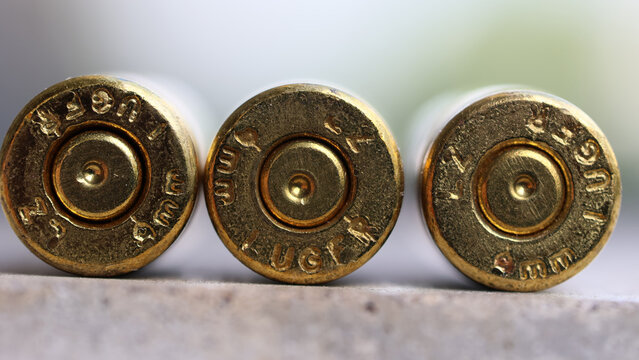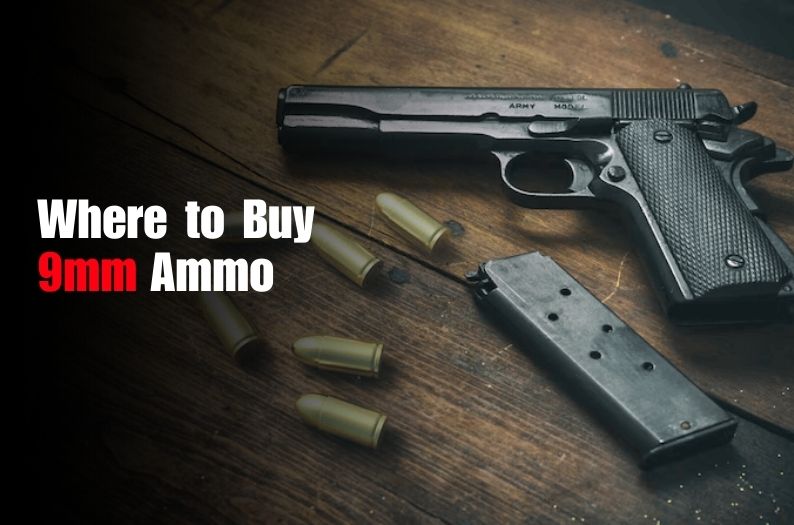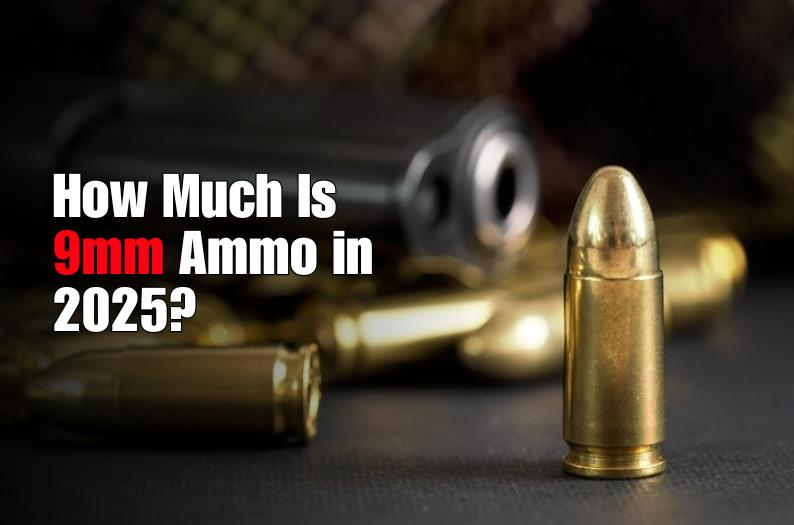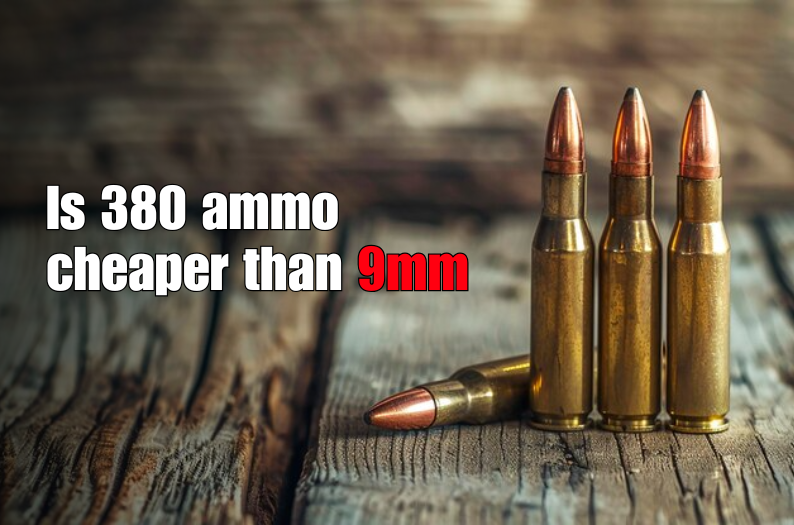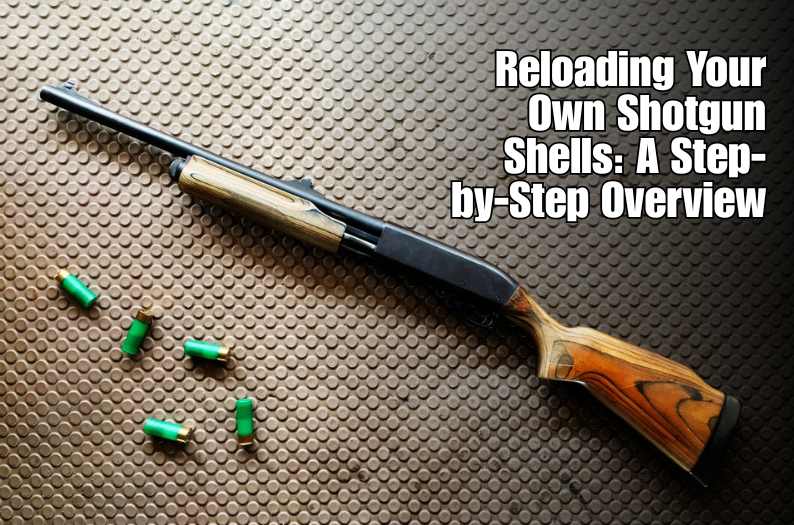9×19mm Parabellum:
1. Introduction
The 9×19mm Parabellum, also known simply as the 9mm, is arguably the most successful and enduring pistol cartridge in the world. Developed by the German engineer Georg Luger in 1901, the cartridge was designed to be a reliable and efficient round for semi-automatic pistols. Over the years, the 9mm has seen widespread adoption by military forces, law enforcement agencies, and civilian shooters alike. Its popularity stems from a combination of factors, including its manageable recoil, effective stopping power, high magazine capacity, and global availability. This article provides an in-depth analysis of the 9×19mm Parabellum, exploring its history, technical specifications, applications, and future prospects.
2. Technical Specifications
The technical design of the 9×19mm Parabellum is one of the key reasons for its widespread adoption. The cartridge's dimensions and ballistics offer a balance between performance and practicality, making it suitable for a wide range of firearms.
Cartridge Design and Dimensions
The 9mm cartridge is a rimless, tapered round with a bullet diameter of 9.01mm (0.355 inches) and a case length of 19.15mm (0.754 inches). The overall length of the cartridge is 29.69mm (1.169 inches), and it typically features a bullet weight ranging from 115 to 147 grains. The most common load is a 124-grain bullet, which provides a balance between velocity, accuracy, and terminal performance.
The cartridge case is made from brass, though other materials such as steel and aluminum are also used, particularly in military and budget ammunition. The case is designed to withstand the pressures generated during firing, typically around 35,000 psi for standard loads. The primer is a small pistol primer, which ignites the powder charge and propels the bullet down the barrel.
Ballistics Performance
The ballistics of the 9mm are well-suited for both self-defense and military applications. Standard 115-grain FMJ (Full Metal Jacket) bullets typically achieve muzzle velocities of 1,100 to 1,200 feet per second (fps) and generate muzzle energies of approximately 350 to 400 foot-pounds (ft-lbs). Heavier 147-grain bullets tend to have lower velocities, around 950 to 1,000 fps, but offer deeper penetration and more consistent performance through barriers.
One of the key advantages of the 9mm is its relatively mild recoil, which allows for fast and accurate follow-up shots. This characteristic makes it particularly well-suited for use in semi-automatic pistols, where rapid shot placement is critical. Additionally, the cartridge's trajectory is relatively flat, aiding in accuracy at typical handgun engagement distances (up to 25 yards).
Variants
The 9mm cartridge has been produced in a variety of configurations to meet different needs. Common variants include:
- Full Metal Jacket (FMJ): The standard military load, designed for reliability and penetration. FMJ bullets are typically used for training and general-purpose shooting.
- Jacketed Hollow Point (JHP): Designed for self-defense, JHP bullets expand upon impact, creating larger wound channels and reducing the risk of over-penetration. Modern JHP designs offer reliable expansion and deep penetration, making them ideal for defensive use.
- +P and +P+: These are overpressure rounds designed to produce higher velocities and greater energy. +P and +P+ loads generate more recoil and wear on the firearm but offer improved terminal performance, particularly in law enforcement contexts.
- Subsonic: These rounds are designed to produce lower velocities, typically below the speed of sound (1,100 fps), and are often used with suppressors to reduce noise. Subsonic 9mm ammunition is popular among special operations forces and civilian shooters who prioritize stealth.
- Frangible: Frangible bullets are designed to disintegrate upon impact with hard surfaces, reducing the risk of ricochet and over-penetration. These rounds are often used in training environments where safety is a primary concern.
3. Historical Development
The history of the 9×19mm Parabellum is deeply intertwined with the development of modern firearms. From its inception in the early 20th century to its widespread adoption by military and law enforcement agencies, the 9mm has played a pivotal role in shaping the trajectory of small arms development.
Inception and Early Use
The 9mm cartridge was developed by Georg Luger as a derivative of the earlier 7.65×21mm Parabellum round. Luger sought to create a cartridge that offered a balance of power, recoil, and magazine capacity, making it suitable for use in his semi-automatic pistol design, the Luger P08. The cartridge was officially introduced in 1902 and quickly gained attention for its performance and reliability.
In 1904, the German Navy adopted the 9mm cartridge for use in the Luger P08 pistol, marking the first official military adoption of the round. The German Army followed suit in 1908, solidifying the 9mm's status as a standard military cartridge. During World War I, the 9mm saw extensive use in the trenches, where its ability to penetrate thick clothing and body armor made it a valuable tool for close-quarters combat.
Adoption by Military Forces
The success of the 9mm during World War I led to its widespread adoption by other military forces in the following decades. By the time World War II broke out, the 9mm was the standard service cartridge for several European countries, including Germany, Italy, and Finland. The cartridge was used in a variety of firearms, including the Luger P08, Walther P38, and MP 40 submachine gun.
In the post-war period, the 9mm continued to gain popularity, particularly among NATO forces. In 1985, the United States adopted the 9mm as its standard service cartridge, replacing the .45 ACP. This decision was driven by several factors, including the desire for greater magazine capacity, improved logistics, and interoperability with NATO allies.
Evolution Over Time
Over the years, the 9mm has undergone numerous refinements and innovations. Advances in metallurgy, powder technology, and bullet design have improved the cartridge's performance, making it more effective for both military and civilian applications. Modern 9mm ammunition is far more powerful and reliable than early versions, with specialized loads available for a wide range of purposes.
The cartridge's evolution has also been influenced by changes in military doctrine and law enforcement tactics. The development of body armor, for example, has led to the creation of armor-piercing 9mm rounds. Similarly, the need for reduced collateral damage in urban environments has spurred the development of frangible and subsonic ammunition.
4. Use in Military and Law Enforcement
The 9mm's widespread adoption by military and law enforcement agencies is a testament to its versatility and effectiveness. From the battlefields of World War II to modern-day police operations, the 9mm has proven itself as a reliable and capable cartridge.
Global Military Adoption
The 9mm is the standard-issue cartridge for many of the world's armed forces, particularly those within NATO. Its ability to be used in both pistols and submachine guns makes it a versatile option for a wide range of military applications. The 9mm's effectiveness in combat has been demonstrated in numerous conflicts, from World War II to the War on Terror.
One of the key reasons for the 9mm's popularity among military forces is its compatibility with a wide range of firearms. The cartridge is used in pistols, such as the Beretta M9 and Glock 17, as well as submachine guns like the MP5 and Uzi. This versatility allows military personnel to carry a common caliber across different weapon platforms, simplifying logistics and ammunition supply.
Police and Security Forces
In the civilian law enforcement sector, the 9mm is favored for its manageable recoil, accuracy, and capacity. Many police departments have transitioned from larger calibers to the 9mm due to its effectiveness in real-world engagements. The FBI, for example, switched from the .40 S&W to the 9mm in 2015, citing advances in bullet technology that have improved the cartridge's terminal performance.
The 9mm is also popular among private security forces and personal protection details. Its combination of stopping power, capacity, and ease of use makes it an ideal choice for professionals who need to carry a concealed weapon for extended periods.
Case Studies: Specific Military Conflicts
The 9mm has seen action in numerous conflicts, each of which has further solidified its reputation as a reliable combat cartridge. During World War II, the 9mm was used extensively by both Axis and Allied forces. The German military's use of the MP 40 submachine gun in close-quarters combat highlighted the cartridge's effectiveness in urban environments and trench warfare.
In more recent conflicts, such as the wars in Iraq and Afghanistan, the 9mm has been the standard sidearm cartridge for U.S. and NATO forces. The Beretta M9, chambered in 9mm, was the primary sidearm for U.S. military personnel during these conflicts. Despite some criticisms regarding stopping power, the 9mm's overall performance in combat has been generally positive, particularly when used with modern hollow-point ammunition.
5. Use in Civilian Market
Beyond its military and law enforcement applications, the 9mm is also a popular choice among civilian shooters. Its affordability, availability, and versatility have made it one of the most commonly purchased handgun cartridges in the world.
Popularity Among Civilian Shooters
The 9mm's popularity among civilian shooters can be attributed to several factors. First and foremost is its affordability. 9mm ammunition is widely produced, resulting in lower prices compared to other calibers. This makes it an attractive option for recreational shooters who engage in regular practice sessions.
Additionally, the 9mm is widely available, with nearly every major ammunition manufacturer producing a variety of 9mm loads. This availability ensures that shooters can easily find the ammunition they need, whether for target practice, competition, or self-defense.
Self-Defense and Concealed Carry
The 9mm is one of the most popular calibers for self-defense and concealed carry. Its manageable recoil allows for rapid follow-up shots, while modern hollow-point ammunition provides effective stopping power. Many concealed carry permit holders choose 9mm pistols due to their compact size, capacity, and ease of use.
Pistols such as the Glock 19, Smith & Wesson M&P Shield, and Sig Sauer P365 are among the most popular 9mm handguns for concealed carry. These pistols offer a balance of size, capacity, and performance, making them ideal for personal protection.
Competition Shooting
In the realm of competitive shooting, the 9mm is a popular choice for disciplines such as IPSC (International Practical Shooting Confederation), IDPA (International Defensive Pistol Association), and USPSA (United States Practical Shooting Association). The cartridge's mild recoil allows for fast, accurate shooting, which is critical in timed competitions.
Moreover, the 9mm's high magazine capacity is an advantage in competitions where the number of rounds fired can impact overall performance. Many competitors choose 9mm pistols specifically for their ability to hold more rounds than larger calibers.
Ammunition Availability and Cost
The widespread availability and relatively low cost of 9mm ammunition make it an accessible option for a broad range of shooters. Bulk purchases of 9mm ammunition are common among enthusiasts who want to stock up for practice or competition. Additionally, the availability of reloading components allows shooters to produce their own ammunition, further reducing costs.
6. Ammunition Development and Advancements
The 9mm cartridge has benefited from significant advancements in ammunition technology over the past century. These developments have enhanced the performance, reliability, and versatility of the cartridge, making it more effective for a wide range of applications.
Bullet Design Innovations
One of the most notable areas of advancement in 9mm ammunition is bullet design. Early 9mm bullets were typically full metal jacket (FMJ) rounds, which were designed for reliable feeding and deep penetration. However, these bullets were less effective in terms of terminal performance, as they tended to over-penetrate without expanding.
Modern 9mm bullets, particularly jacketed hollow points (JHP), have been engineered to expand upon impact, creating larger wound channels and delivering more energy to the target. Advances in bullet technology have resulted in designs that consistently expand even when passing through barriers such as clothing or auto glass. This has made the 9mm an even more effective self-defense cartridge.
Powder and Primer Improvements
In addition to bullet design, advancements in powder and primer technology have contributed to the 9mm's performance. Modern powders burn more efficiently, generating consistent velocities and reducing the amount of unburned residue left in the barrel. This results in more reliable cycling in semi-automatic pistols and improved accuracy.
Primer technology has also evolved, with modern primers offering more consistent ignition and greater resistance to environmental factors such as moisture and temperature extremes. These improvements have enhanced the reliability of 9mm ammunition, particularly in harsh conditions.
Specialty Ammunition
The development of specialty 9mm ammunition has expanded the cartridge's utility in specific scenarios. For example:
- Armor-Piercing Rounds: These rounds are designed to penetrate body armor and other hard targets, making them suitable for military and law enforcement use. They typically feature hardened steel or tungsten cores.
- Frangible Rounds: Frangible ammunition is designed to break apart upon impact with hard surfaces, reducing the risk of ricochet and over-penetration. This makes it ideal for training in environments where safety is a primary concern.
- Subsonic Rounds: Subsonic ammunition is designed to produce lower velocities, typically below the speed of sound. This reduces the noise signature when used with suppressors, making it ideal for special operations and stealth applications.
7. Legal and Ethical Considerations
The use and ownership of 9×19mm Parabellum ammunition are subject to legal and ethical considerations, particularly when it comes to self-defense, concealed carry, and military use.
Gun Laws and Regulation
Gun laws vary widely by country and region, affecting the availability and use of 9mm ammunition. In the United States, for example, the 9mm is widely available, but state and local regulations may impose restrictions on magazine capacity, ammunition types, and the use of hollow-point bullets.
In some countries, civilian ownership of 9mm firearms is heavily regulated or prohibited. In the United Kingdom, for instance, private ownership of handguns chambered in 9mm is generally illegal, with exceptions for specific activities such as Olympic shooting.
Ethical Considerations in Self-Defense
The use of deadly force, including the use of 9mm firearms in self-defense, carries significant ethical considerations. Individuals who choose to carry a 9mm for self-defense must be aware of the legal implications and moral responsibilities associated with using deadly force. This includes understanding the laws governing self-defense in their jurisdiction and ensuring that they are justified in their actions.
Military Use and the Laws of Armed Conflict
In the context of military use, the 9mm must be employed in accordance with the laws of armed conflict, including international humanitarian law. This includes considerations such as the proportional use of force, the distinction between combatants and non-combatants, and the avoidance of unnecessary suffering.
8. Challenges and Criticisms
While the 9×19mm Parabellum is widely regarded as one of the most successful handgun cartridges, it is not without its challenges and criticisms. Some of the common criticisms include concerns about stopping power, over-penetration, and the potential for ricochet.
Stopping Power Debate
One of the most debated aspects of the 9mm is its stopping power. Critics argue that the 9mm lacks the stopping power of larger calibers such as the .45 ACP or .40 S&W, particularly when using FMJ ammunition. However, proponents of the 9mm counter that modern JHP ammunition has significantly improved the cartridge's terminal performance, making it comparable to larger calibers in real-world scenarios.
The stopping power debate often centers around the balance between bullet diameter, velocity, and energy. Larger calibers may offer greater energy transfer, but they also typically produce more recoil, which can affect accuracy and follow-up shot speed. The 9mm's advantage lies in its balance, offering sufficient stopping power with manageable recoil and high capacity.
Over-Penetration Concerns
Another concern with the 9mm is the potential for over-penetration, particularly when using FMJ ammunition. Over-penetration occurs when a bullet passes through the intended target and continues traveling, posing a risk to bystanders or unintended targets. This is a significant concern in both military and civilian contexts, where collateral damage must be minimized.
Modern JHP ammunition is designed to mitigate the risk of over-penetration by expanding upon impact, creating larger wound channels and dissipating energy more quickly. However, the risk of over-penetration still exists, particularly with certain types of barriers or when using standard FMJ rounds.
Ricochet Risks
The potential for ricochet is another challenge associated with the 9mm, particularly in urban environments where hard surfaces such as concrete and metal are common. Ricochet occurs when a bullet deflects off a surface and changes direction, potentially striking unintended targets.
Frangible ammunition is one solution to this problem, as it is designed to disintegrate upon impact with hard surfaces, reducing the risk of ricochet. However, frangible rounds may not always be suitable for all applications, particularly in military or law enforcement scenarios where penetration through barriers is required.
9. Future of 9×19mm Parabellum
As we look to the future, the 9×19mm Parabellum shows no signs of losing its relevance in the world of firearms. Ongoing advancements in ammunition technology, changing military and law enforcement requirements, and the continued popularity of the 9mm among civilian shooters all point to a bright future for this venerable cartridge.
Trends in Ammunition Development
Ongoing research and development in ammunition technology continue to enhance the performance of the 9mm cartridge. Innovations such as polymer-cased ammunition, which reduces weight and increases magazine capacity, are likely to become more prevalent in the coming years. Additionally, advancements in bullet design, including the use of new materials and manufacturing techniques, will continue to improve the terminal performance of 9mm ammunition.
Another trend to watch is the development of "smart" ammunition, which incorporates technology to improve accuracy, reduce collateral damage, or provide additional functionality. While these technologies are still in the early stages of development, they have the potential to revolutionize the way 9mm ammunition is used in both military and civilian contexts.
Continued Relevance
The 9mm's versatility and effectiveness ensure that it will remain a popular choice for military, law enforcement, and civilian use. Its widespread adoption and consistent demand suggest that the 9mm will continue to be a dominant force in the firearms market for the foreseeable future.
One of the key factors contributing to the 9mm's continued relevance is its compatibility with a wide range of firearms. As new handgun designs emerge, manufacturers are likely to continue offering 9mm versions to meet market demand. Additionally, the 9mm's established supply chain and global availability make it a practical choice for military and law enforcement agencies looking to standardize their ammunition.
Potential Challenges and Competition
While the 9mm remains highly popular, it does face competition from other calibers and emerging technologies. The .40 S&W, for example, gained popularity in the 1990s as a compromise between the 9mm and the .45 ACP, offering greater stopping power with similar capacity. However, recent trends have seen a shift back to the 9mm, particularly among law enforcement agencies.
Emerging technologies, such as caseless ammunition or alternative propulsion systems, could also pose a challenge to the 9mm in the future. However, these technologies are still in the experimental stages, and it will likely be many years before they become viable alternatives to traditional cartridges like the 9mm.
10. Conclusion
The 9×19mm Parabellum has earned its place as one of the most successful and enduring handgun cartridges in history. From its origins in the early 20th century to its widespread adoption by military forces, law enforcement agencies, and civilian shooters, the 9mm has proven itself to be a reliable, versatile, and effective cartridge.
Its combination of manageable recoil, effective stopping power, high magazine capacity, and global availability make it a practical choice for a wide range of applications. As ammunition technology continues to evolve, the 9mm is likely to remain a dominant force in the world of firearms for many years to come.
In summary, the 9×19mm Parabellum is more than just a cartridge; it is a symbol of the enduring pursuit of balance in firearm design—a balance between power and control, capacity and size, innovation and tradition. Whether on the battlefield, in the hands of law enforcement, or in the holsters of everyday citizens, the 9mm continues to set the standard by which other handgun cartridges are measured.
- #9x19mm Parabellum aftermarket components
- #9x19mm Parabellum ammo types
- #9x19mm Parabellum ballistics
- #9x19mm Parabellum bullet weights
- #9x19mm Parabellum cartridge dimensions
- #9x19mm Parabellum case design
- #9x19mm Parabellum expansion
- #9x19mm Parabellum for law enforcement
- #9x19mm Parabellum for self defense
- #9x19mm Parabellum for target shooting
- #9x19mm Parabellum future
- #9x19mm Parabellum history
- #9x19mm Parabellum penetration
- #9x19mm Parabellum performance
- #9x19mm Parabellum popularity
- #9x19mm Parabellum pressure levels
- #9x19mm Parabellum recoil characteristics
- #9x19mm Parabellum reloading
- #9x19mm Parabellum stopping power
- #9x19mm Parabellum vs other calibers


